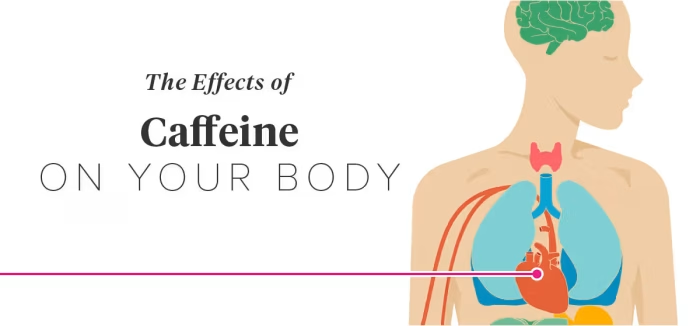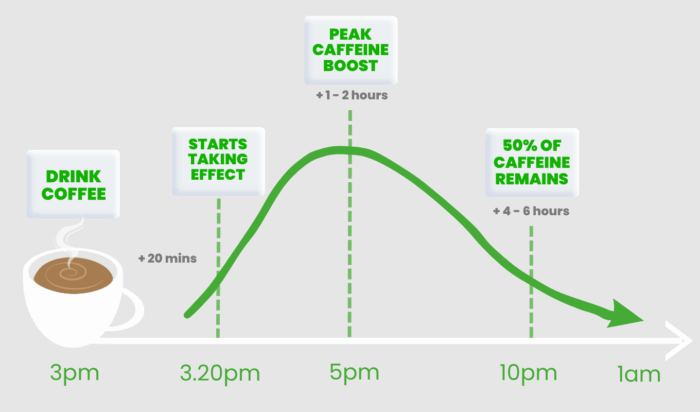Caffeine is a substance most of us encounter on daily basis, whether or not it’s in our morning espresso, a cup of tea, or perhaps a piece of chocolate. It’s prized for its means to assist us really feel extra awake, targeted, and energised. However right here does it come from, and the way does it work inside the physique to create these stimulating results?
Whereas it’s typically taken as a right, caffeine is a captivating pure compound that impacts hundreds of thousands of individuals each day. Understanding its origin, the way it features, and what its advantages and disadvantages are may also help you make extra knowledgeable decisions about how and when to incorporate it in your life-style.
Caffeine’s Origins and Pure Sources


Caffeine is a naturally occurring stimulant discovered within the seeds, leaves, and fruits of varied crops. It serves as a pure pesticide for the crops, serving to to guard them from bugs. The most typical sources embody espresso beans, tea leaves, cacao pods (used to make chocolate), and kola nuts, which are sometimes utilized in smooth drinks.
Over time, people have harnessed these sources to create a variety of drinks and merchandise. Espresso and tea stay the preferred types of caffeine consumption globally, however you’ll additionally discover it in vitality drinks, colas, pre-workout dietary supplements, and sure medicines.
Right here’s a fast comparability of frequent meals and merchandise that include caffeine – even while you may not anticipate it:
| Product Kind | Instance Gadgets | Estimated Caffeine Content material |
| Chocolate | Darkish chocolate (30g) | 20–30 mg |
| Delicate drinks | Cola (330ml can) | 30–40 mg |
| Decaf espresso | Brewed decaf (1 cup) | 2–5 mg |
| Ache relievers | Excedrin, Anadin Further (per dose) | 65–130 mg |
| Power water | Enhanced water manufacturers | 40–125 mg |
| Inexperienced tea extract | Present in weight reduction & detox merchandise | 25–90 mg per serving |
| Ice cream or yogurt | Espresso-flavored desserts | 30–45 mg per serving |
Tip: All the time learn labels – some dietary supplements, gums, and even skincare merchandise (like caffeine-infused eye lotions) embody it too.
How Caffeine Impacts the Physique


As soon as consumed, caffeine is rapidly absorbed into the bloodstream and reaches the mind inside 30 to 60 minutes. There, it blocks the results of adenosine – a neurotransmitter chargeable for making us really feel drained. By blocking adenosine, caffeine promotes the discharge of different neurotransmitters like dopamine and norepinephrine, which enhance alertness, temper, and cognitive operate.
These results sometimes final for a number of hours and may fluctuate relying on how rapidly a person metabolises caffeine. Some folks course of it quickly, whereas others really feel the results for for much longer. This is the reason one particular person can drink espresso at night time and nonetheless sleep soundly, whereas one other lies awake after a day espresso.
Cognitive and Bodily Advantages of Caffeine
One of the well-known results of caffeine is improved psychological alertness. Many individuals discover it helps them focus, suppose extra clearly, and really feel extra motivated. It has additionally been proven to reinforce reminiscence and response occasions within the quick time period, which is why it’s typically used to fight fatigue at work or throughout research classes.
Bodily, caffeine might improve efficiency by growing endurance and lowering perceived effort. This has made it a well-liked help amongst athletes and health lovers. Some proof additionally suggests it might assist with fats oxidation and metabolism, although the results are usually modest.
How Lengthy Does Caffeine Keep in Your System?


Though the rapid results may be felt inside an hour, it stays in your physique for much longer than most individuals suppose. The common half-life of caffeine is about 3 to five hours, which implies it takes that period of time to your physique to get rid of half of it. Nevertheless, this will fluctuate based mostly on genetics, well being circumstances, and different elements.
Right here’s a breakdown of caffeine metabolism and timing:
- Absorption begins: Inside 15–45 minutes of consumption.
- Peak focus: Reached round 60 minutes after consumption.
- Half-life: Usually between 3 to five hours for wholesome adults.
- Full clearance: It could take 8 to 14 hours for caffeine to completely depart the system.
- Slower metabolism: In pregnant girls, folks with liver circumstances, or these taking sure medicines, clearance can take even longer.
Observe: Even decaf espresso incorporates round 2–5 mg of caffeine, which may nonetheless have an effect on these with excessive sensitivity.
Potential Facet Results and Particular person Sensitivity


Though caffeine has many advantages, it’s not with out its drawbacks. Some people are extra delicate to it and should expertise unwanted effects corresponding to jitteriness, anxiousness, digestive upset, or insomnia. These signs can happen even at reasonable consumption ranges for sure folks.
Genetics play a big position. Different elements, corresponding to age, liver operate, remedy use, and being pregnant, can affect how your physique processes caffeine. For instance, pregnant girls are suggested to restrict their consumption as a result of caffeine crosses the placenta and should have an effect on fetal improvement.
Most well being pointers recommend that as much as 400 milligrams of caffeine per day – about 4 cups of brewed espresso – is taken into account protected for many wholesome adults. Nevertheless, this advice can fluctuate relying in your particular person tolerance and well being standing.
Making Knowledgeable Decisions About Caffeine
Understanding what’s caffeine and the way it features within the physique lets you make extra knowledgeable decisions about your consumption. Whether or not you’re reaching to your morning espresso, a day cup of tea, or an vitality drink earlier than a exercise, realizing the way it impacts you possibly can aid you keep away from disagreeable unwanted effects and luxuriate in its advantages extra absolutely.
It’s additionally necessary to think about all sources of caffeine, not simply espresso. Chocolate, smooth drinks, some ache relievers, and even decaffeinated espresso include small quantities that may add up over the course of a day.
To dive deeper into the science of what’s caffeine?, instructional assets can be found to supply detailed insights into its position in well being and wellbeing.
In abstract, caffeine is a robust, naturally occurring stimulant with each advantages and dangers. When consumed thoughtfully and moderately, it may be a invaluable a part of a balanced life-style.
